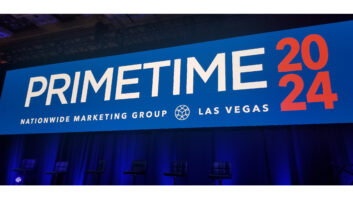Powerline-based home networking solutions managed to doggedly hold onto their niche in the market during 2004, despite the onslaught presented by inexpensive wireless and Ethernet products.
Jonathon Bettino, Belkin’s product manager, networking, said his company and a few others continue to offer products, but the market is still very small. Price is playing a large role in this stagnant behavior, but the fact that people have an instilled fear of using electrical outlets for anything except plugging in appliances, and there are still problems with the network being able to bridge gaps created in a home’s electrical grid by devices like surge protectors.
Another cause for concern is powerline’s 14MBps theoretical data transfer speed, 8MBps actual, is another issue as that is more than six times slower then the less expensive wireless solutions now available.
Despite the categories somewhat gloomy current position, there is still potential for powerline to have an impact, Bettino said. The HomePlug Association has recently issued a new standard geared toward A/V products. It offers what equates to 125MBps data speeds and could prove useful for connecting CE devices.
Netgear’s Vivek Pathela, senior director of product marketing, consumer products, was upbeat on the technologies potential. “Our new powerline product is the WGXB102 wall-plugged wireless range extender that allows any home network, with a wired or wireless router from any vendor, to get wireless access in any room or location in the house where there is a power outlet.
Cameron McCaskill is VP of sales and business development for Intellon, the primary maker of chipsets for powerline networking products. McCaskill pointed to two important developmental factors that could boost powerline sales. First is the HomePlug Association’s efforts to adapt the technology for content distribution where it is now optimized for data distribution.
During the first half of 2005, HomePlug 2.0 will be released, which has been developed to handle audio/video content at transfer rates in excess of 85MBps. The specification should be certified by late 2005 and then Intellon will start building chipsets based on the specification for use in stand-alone powerline routers and for embedded applications.
However, Intellon is not waiting for the specification to be finalized. It has already teamed up with one company to bring this technology to the home.
Intellon announced in late November that it joined BridgeCo, a provider of wired and wireless digital home entertainment networking solutions, to introduce the industry’s first HomePlug-enabled audio Digital Media Player (DMP). The design is based on Intellon’s INT 5200 chipset, which enables whole-house audio sharing via existing powerlines, and BridgeCo’s silicon and software platform, which provides home networking capabilities to consumer audio products.
BridgeCo DMP reference design will allow manufacturers to create devices that will plug into any existing stereo system, PC or into the Internet. Products based on BridgeCo’s design should sell in the $100 to $150 price range, according to Intellon.
McCaskill expects cable- and DSL-based ISPs to be the primary adopter of the technology, in 2005, for use in various set-top devices. The following year should see a spurt in retail sales when some A/V products with built-in powerline capability become available.
The second important change concerns price. Intellon expects ISP and CE vendor purchases to help drive down powerline chipset pricing to the point where it is comparable with Wi-Fi.













